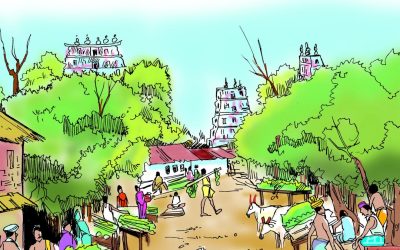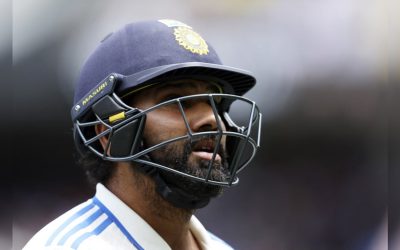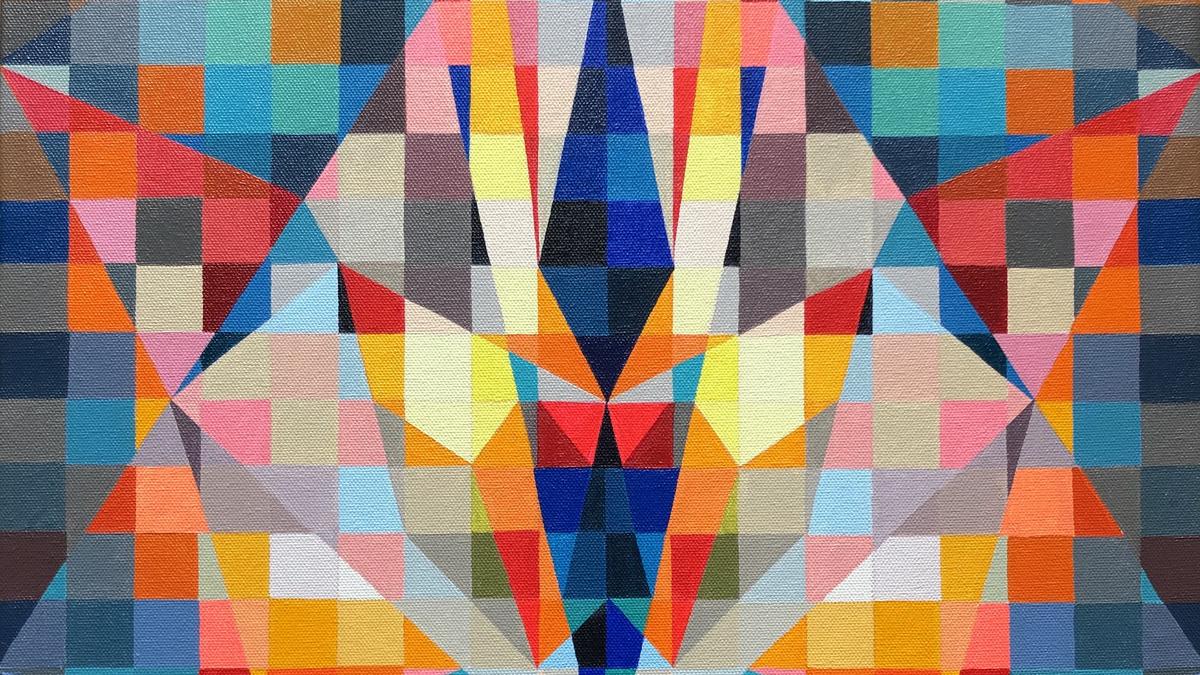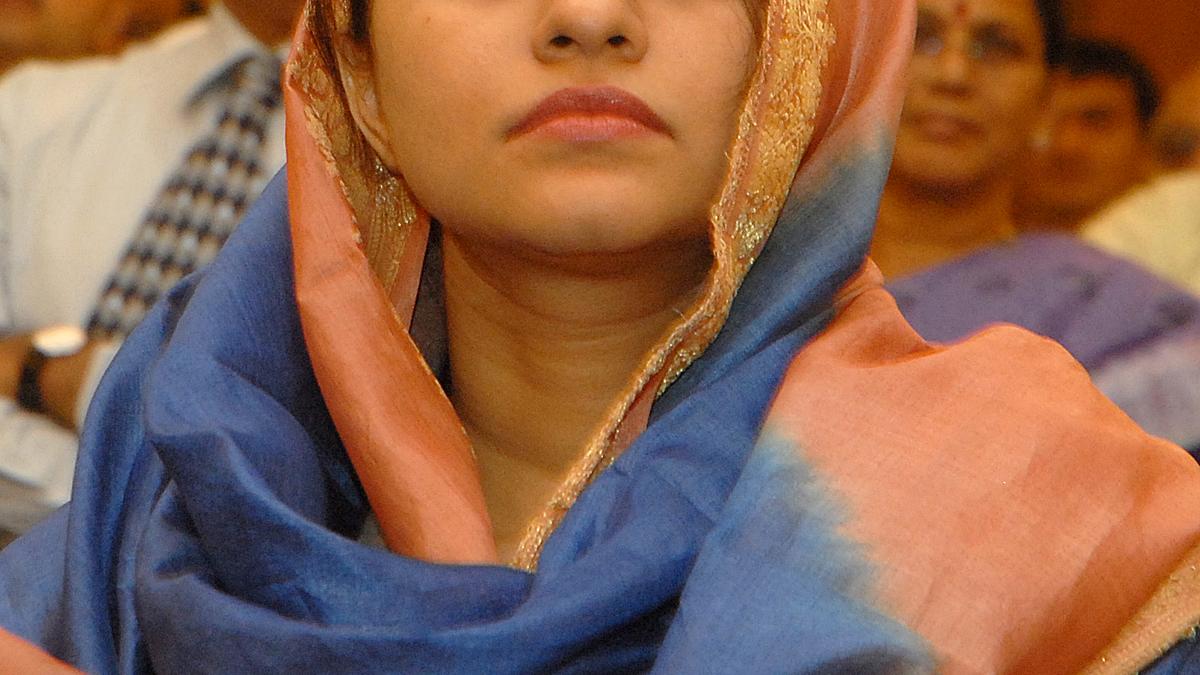Athriya Krishna Balaji effectively wove stories from the epics in her Bharatanatyam performance
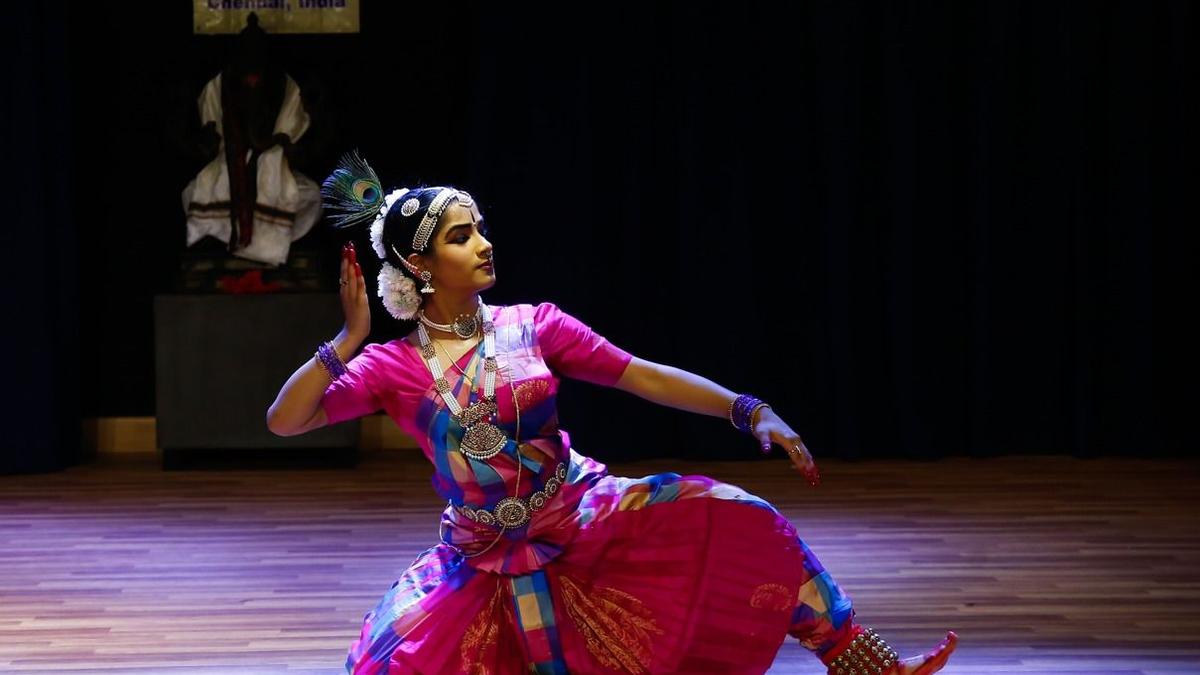

Athriya Krishna Balaji impressed with her realistic portrayals.
| Photo Credit: Special Arrangement
Athriya Krishnan Balaji, disciple of Vinitha Subramanian, presented her solo recital, incorporating tales from the Ramayana and the Mahabharata, at the Margazhi music and Dance Margazhi Festival organised under the auspices of Kartik Fine Arts.
Athriya began her recital with a pushpanjali in raga Srotaswini, set to Adi tala, a composition by Madurai R. Muralidaran. The next item was the varnam, for which Athriya chose episodes from the Mahabharata, especially those that led to the Kurukshetra War.
As Arjuna steps onto the battlefield, he asks Krishna how he can fight his Kaurava cousins, guru Dronacharya, and beloved grandfather Bhishma. “Just because you killed your cousins, does it mean I can do the same. If you kill the root of the tree, how will the tree grow?” In the second half, Krishna explains the difference between Dharma and Nyaya and then reveals his true form to Arjuna. The varnam ‘Krishna the Omnipresent’ set in Ragamalika was written by Athriya’s father, Balaji Krishnan, and tuned by Nagai Sriram. Athriya’s sharp footwork, precise adavus and realistic portrayals in this segment stood out.
Next came the keerthanam ‘Ramasami dhoothan’ (raga Magudhari, Adit tala) by Arunachala Kavi, depicting an episode from the Ramayana, where Hanuman enters Ravana’s palace. Hanuman is dragged to the court as a prisoner but he boldly declares, “Hey Ravana, I am Rama’s messenger, not just a monkey. My name is Hanuman.” After firmly informing Ravana that he will fight him out at a battle, Hanuman urges Ravana to free Sita. Enraged, Ravana orders Hanuman’s tail to be set on fire. Hanuman cleverly uses this to his advantage, and sets Ravana’s palace ablaze, and eventually, the entire city of Lanka.
The dancer concluded her performance with a thillana in Raga Maand, set to Adi tala, and composed by Lalgudi G. Jayaraman.
Athriya’s dance performance brought to the fore the timeless appeal of the epics.
Published – February 12, 2025 01:19 pm IST
